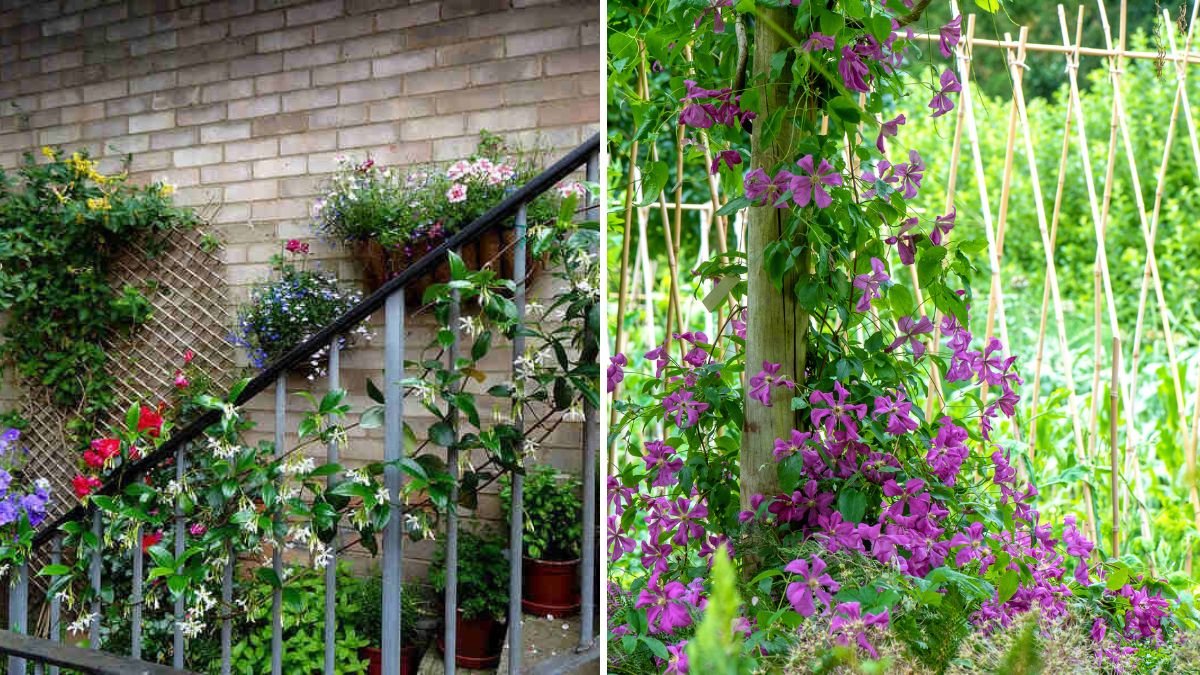Balcony gardening allows urban dwellers to cultivate greenery even in limited spaces, and climbing plants are perfect for vertical gardening. Trellises provide support, structure, and aesthetics for climbing plants while optimizing the use of vertical space. Proper use of trellises encourages healthy growth, improves air circulation, and enhances the visual appeal of a balcony garden.
This article explores how to use trellises effectively for balcony climbing plants, including types of trellises, plant selection, installation, care, and design strategies for a productive and beautiful vertical garden.
1. Benefits of Using Trellises for Climbing Plants
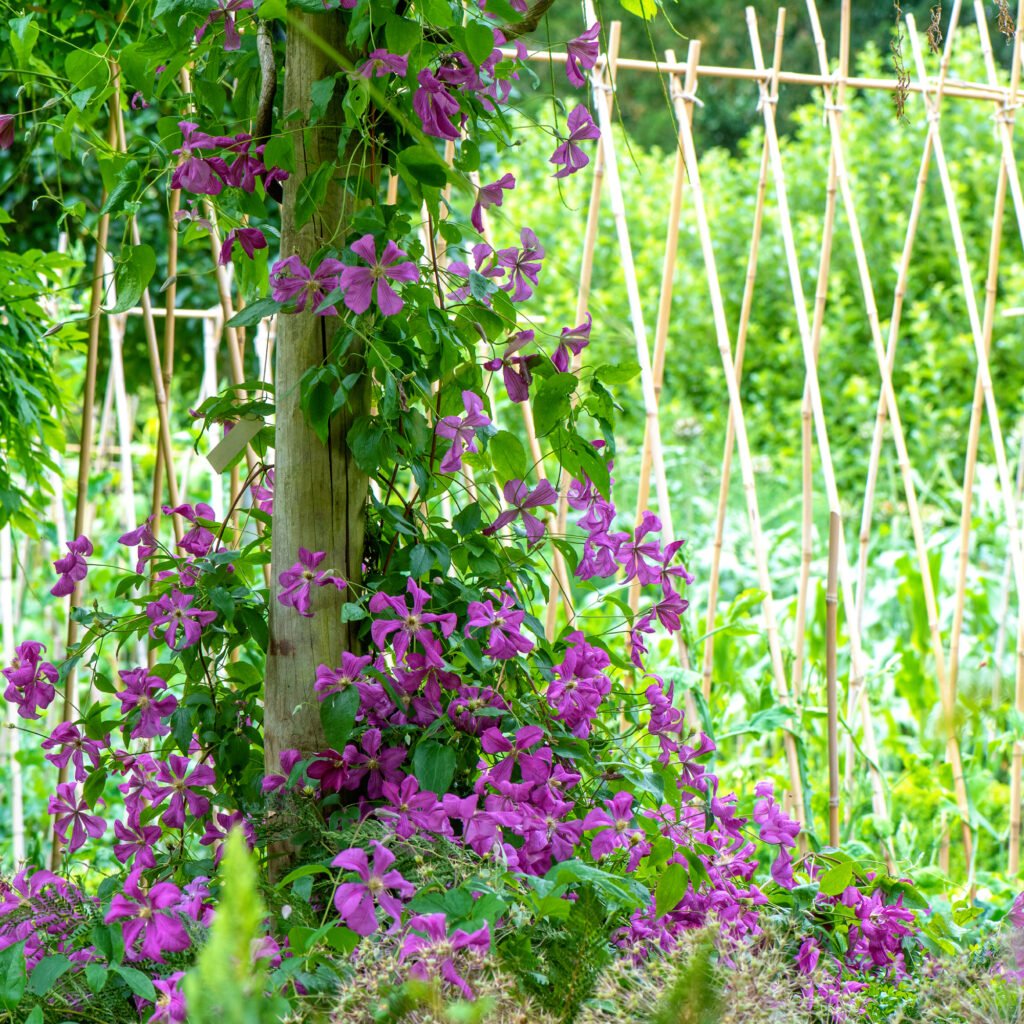
Trellises offer several advantages in balcony gardening:
- Vertical Growth: Maximizes space in small urban areas.
- Healthier Plants: Supports stems, reduces breakage, and prevents overcrowding.
- Improved Air Circulation: Reduces the risk of fungal diseases.
- Aesthetic Appeal: Adds structure and visual interest with cascading greenery and flowers.
- Ease of Maintenance and Harvest: Easier access to climbing vegetables like beans, peas, or tomatoes.
By providing support and structure, trellises enable climbing plants to thrive while keeping the balcony organized.
2. Choosing the Right Climbing Plants
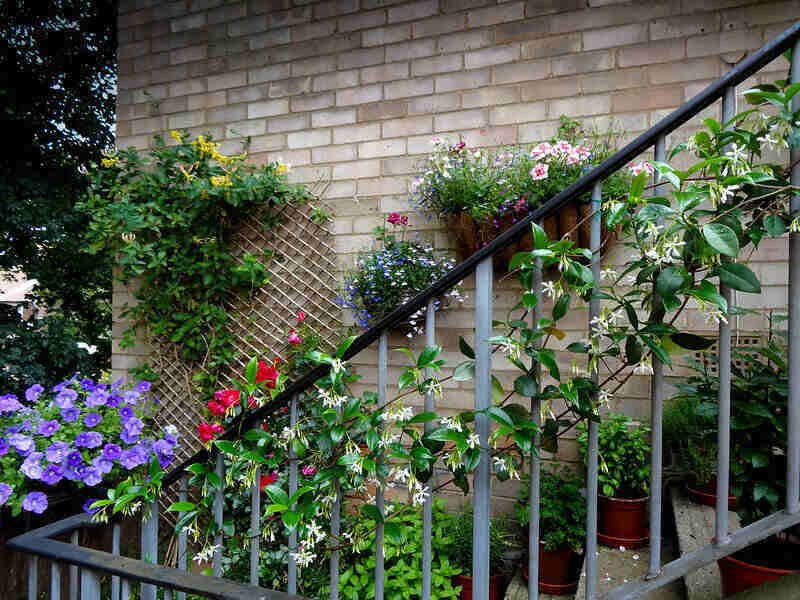
Not all plants are suitable for trellises; the ideal climbing plants for balcony gardens include:
- Flowering Climbers: Bougainvillea, morning glory, clematis, and jasmine add beauty and fragrance.
- Edible Climbers: Tomatoes, cucumbers, beans, and peas offer both yield and greenery.
- Vining Foliage Plants: Pothos, philodendron, or ivy create lush, cascading greenery.
When selecting climbing plants, consider growth rate, sun requirements, container size, and maintenance needs to match the balcony conditions.
3. Types of Trellises for Balconies
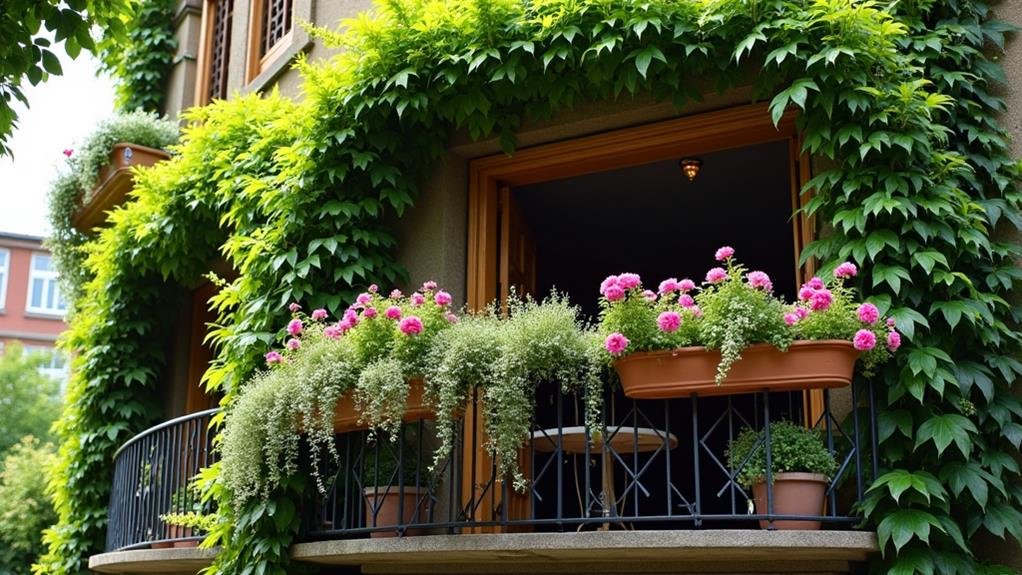
The choice of trellis depends on plant type, space, and aesthetic preference:
a. Flat or Wall-Mounted Trellises
- Ideal for narrow spaces or against balcony walls.
- Supports flowering climbers and vining vegetables.
- Provides a decorative backdrop and prevents plants from sprawling.
b. A-Frame Trellises
- Freestanding, triangular frames ideal for containers.
- Suitable for peas, beans, and other vegetable climbers.
- Allows plants to grow upward without leaning on walls.
c. Arch or Obelisk Trellises
- Adds height and visual interest.
- Supports flowering plants like clematis and jasmine.
- Works well as a focal point in balcony design.
d. Lattice Panels
- Modular design allows easy installation.
- Supports moderate climbing plants.
- Can be combined with railing-mounted containers for a vertical garden effect.
Selecting the right trellis type ensures plant stability, vertical growth, and aesthetic harmony.
4. Container Selection for Climbing Plants
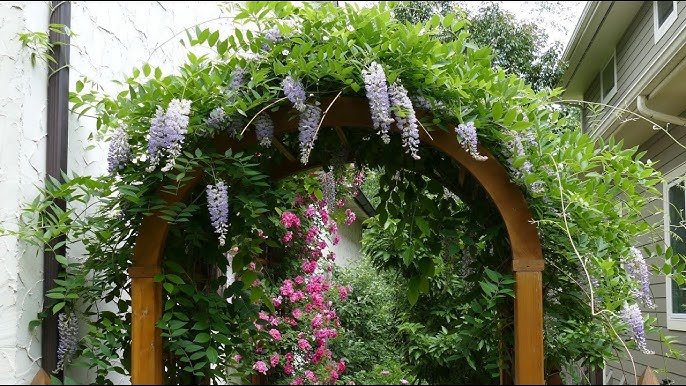
The container is as important as the trellis itself:
- Size: Deep containers (12–18 inches) for vegetables; medium for smaller flowering vines.
- Material: Plastic, ceramic, or resin for lightweight options; terracotta for sturdiness.
- Drainage: Multiple drainage holes to prevent waterlogging.
- Anchoring: Heavy or weighted containers prevent tipping as plants grow tall and heavy.
Proper container choice ensures healthy root growth and long-term plant stability.
5. Installing Trellises Safely
Correct installation is critical to prevent accidents and promote plant health:
- Secure Anchoring: Attach trellises to walls, railings, or balcony floors with brackets or hooks.
- Container Stability: Ensure containers are heavy or anchored to prevent toppling.
- Positioning: Place trellises for optimal sunlight and airflow.
- Height Considerations: Match trellis height to plant type; avoid overcrowding or excessive shading.
Proper installation promotes safe, upward growth and reduces the risk of plant damage.
6. Soil and Fertilization for Climbing Plants
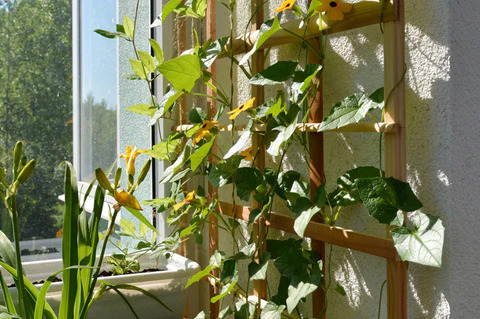
Climbing plants require fertile, well-draining soil:
- Soil Mix: Combine 40% potting mix, 30% compost, 20% coco peat or peat moss, and 10% perlite for drainage.
- pH Requirements: Slightly acidic to neutral (6.0–7.0) for most flowering and edible climbers.
- Fertilization: Slow-release fertilizer at planting, supplemented with liquid fertilizer every 2–3 weeks during growth.
Nutrient-rich soil ensures robust stems, abundant leaves, and prolific flowering or fruiting.
7. Training Plants on the Trellis
Training climbing plants correctly encourages healthy growth:
- Initial Guidance: Gently tie stems to trellis with soft twine or plant clips.
- Regular Adjustment: As plants grow, guide new shoots upward.
- Pruning: Remove dead or overcrowded stems to maintain airflow.
- Pinching Tips: Pinch tips of certain vines to encourage bushier growth and more flowers.
Training ensures even coverage, strong support, and balanced growth.
8. Watering Practices
Climbing plants in containers require consistent watering:
- Frequency: Water when the top 1–2 inches of soil is dry.
- Method: Water at soil level to avoid wetting leaves, which can cause fungal diseases.
- Mulching: Use organic mulch to retain moisture and regulate temperature.
- Self-Watering Options: Consider containers with reservoirs for consistent moisture, especially in hot climates.
Proper watering promotes healthy leaves, vibrant flowers, and robust fruit production.
9. Pest and Disease Management
Climbing plants can attract pests if not maintained properly:
- Common Pests: Aphids, spider mites, whiteflies, and caterpillars.
- Preventive Measures: Inspect leaves regularly, remove dead material, and avoid overcrowding.
- Organic Treatments: Neem oil, insecticidal soaps, or handpicking pests.
- Disease Prevention: Ensure good air circulation and avoid waterlogging to reduce fungal infections.
Maintaining plant health ensures strong growth, fewer pests, and more productive plants.
10. Seasonal Care and Maintenance
Different seasons require specific adjustments:
- Spring: Begin training new growth, fertilize, and check trellis stability.
- Summer: Monitor watering, prevent heat stress, and support heavy fruiting vines.
- Autumn: Prune plants to remove dead stems, clean soil surface, and prepare for winter.
- Winter: Protect sensitive climbers by moving containers indoors or using frost cloths.
Seasonal care ensures continuous growth and long-lasting trellis support.
11. Design Tips for Balcony Trellis Gardens
- Vertical Layering: Combine tall climbers with low-growing ground cover for visual depth.
- Color Coordination: Mix flowering climbers with green foliage for aesthetic contrast.
- Container Variety: Use varied container sizes and shapes for interest.
- Focal Points: Use trellises as central features, framing seating areas or balcony corners.
- Mobility: Lightweight, portable containers allow repositioning according to sunlight or wind conditions.
Effective design makes trellis gardens both functional and visually appealing.
12. Benefits of Trellis Gardening
Using trellises for climbing plants provides multiple benefits:
- Maximizes vertical space in urban environments.
- Supports healthy plant growth with strong stems and improved air circulation.
- Reduces pest and disease risk by keeping plants off the ground.
- Enhances balcony aesthetics with lush greenery and flowers.
- Facilitates easy maintenance and harvesting for edible climbers.
Trellis gardening combines productivity, aesthetics, and efficient use of space, ideal for urban gardening.
Conclusion
Trellises are indispensable for balcony climbing plants, providing support, structure, and visual appeal. By choosing appropriate climbing plants, secure containers, fertile soil, and well-designed trellises, gardeners can create thriving vertical gardens even in small urban spaces. Regular maintenance, proper training, consistent watering, and seasonal adjustments ensure healthy growth, abundant flowering or fruiting, and aesthetic beauty.
A thoughtfully planned trellis garden transforms a balcony into a green, productive, and visually appealing oasis, demonstrating that urban gardening is possible and rewarding, even in limited spaces.
